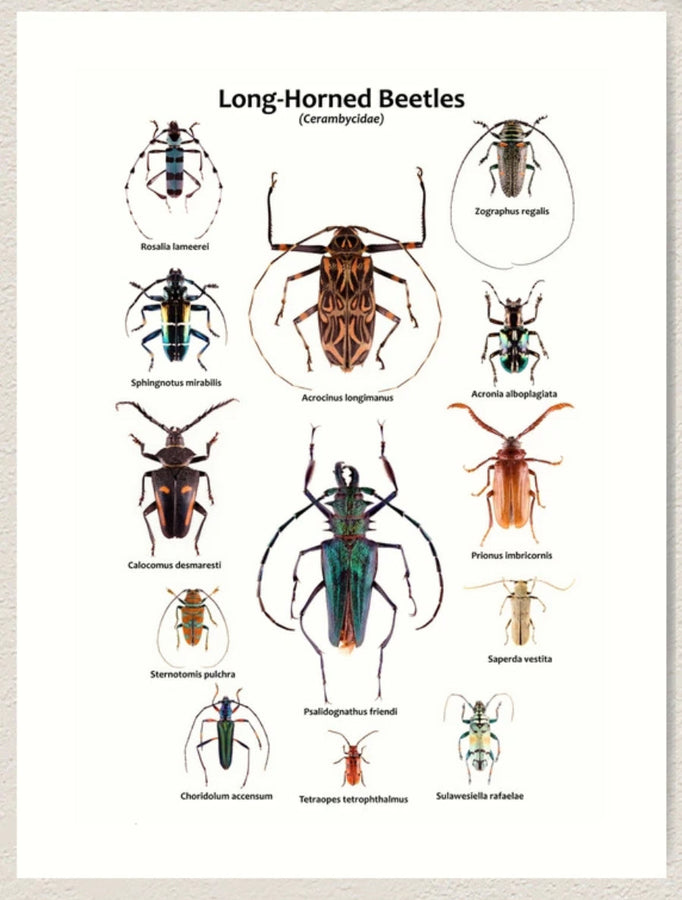
If insects had a “Best Hair” competition, the Longhorned Beetle would win by a landslide with those glorious, oversized antennae are the envy of the beetle world. With over 35,000 species worldwide, these beetles come in every shape, size, and color you can imagine, but all share one striking trait: antennae that can be longer than their bodies!  What’s a Longhorned Beetle?
What’s a Longhorned Beetle?
Longhorned beetles belong to the Cerambycidae family, and they’re named for their ultra-long, segmented antennae. These beetles range in size from tiny (a few millimeters) to massive (over 6 inches, like the Titan beetle of South America!). Their bodies are often sleek and cylindrical, with bold patterns or metallic sheens that scream “don’t ignore me.”

What’s With the Long Antennae?
The antennae are more than just fancy headgear. They’re packed with sensory receptors that help the beetle detect scents, vibrations, and chemical signals. Basically, they’re high-tech feelers for navigating the world. Some species even use them to find mates or sense the perfect tree to lay eggs in.
 Fun Fact: Timber Trouble
Fun Fact: Timber Trouble
Many longhorned beetle larvae are wood-borers, living inside trees and chewing tunnels as they grow. While this makes them important players in forest ecosystems (breaking down dead wood), some species, like the infamous Asian longhorned beetle, are invasive pests that threaten hardwood trees in North America and Europe.
 Where to Spot Them
Where to Spot Them
Longhorned beetles are everywhere, from forests to gardens, under bark, or resting on flowers. Adults are often seen on logs, stumps, or even lights at night. Some species are beautifully camouflaged to look like bark, while others are boldly patterned, like the stunning rosalia longicorn of Europe.
Why They’re Cool
Besides those swoon-worthy antennae, longhorned beetles are cool because they play a dual role in ecosystems: helping decompose wood while also serving as food for birds and mammals. And let’s be honest, they just look awesome. There’s something satisfyingly symmetrical about a beetle with antennae twice its body length.
